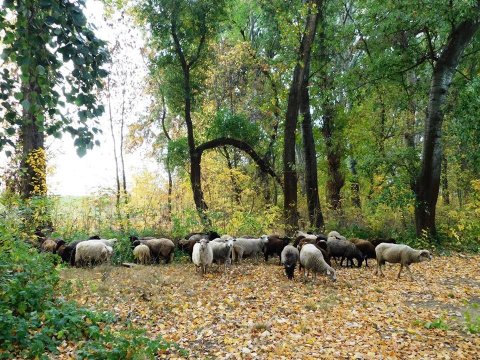Forest grazing (photo by Mihaly Makai)
Forest grazing activities are usually recognized as historical former land use or new silvopastoral grazing experiments. In many countries forest grazing was gradually restricted over the past 250 years. As a result, there is little contemporary scientific information available about the impact of forest grazing on vegetation and the traditional ecological knowledge associated with it. In our paper, we introduce the local and traditional knowledge and practice of forest grazing in Hungary.

Forest grazing (photo by Viktor Ulicsni)
Our study shows that herders have a living ecological knowledge, practicing forest grazing in native (oak, hornbeam, beech, etc.) but mostly in non-native (black locust, pine, and poplar plantations) forest stands. The impact of livestock grazing on native and non-native forests is not considerably different, in the view of the herders. For both forest types, the greatest impact of grazing was the suppression of the shrub layer, while grazing also increased the dominance and palatability (“tameness”) of the grasses. Livestock may cause significant damage to seedlings during forest grazing, but if done with care, grazing can also be an integral part of forestry management. Forest grazing has high potential to fight against invasive shrub species in forests and plantations.
Our results highlighted the importance of collaborating with holders of local and traditional knowledge in order to gain a better understanding of the effects of livestock grazing on vegetation in temperate forests.
Varga, A., Demeter, L., Ulicsni, V., Öllerer, K, Biró, M., Babai, D., Molnár, Zs. (2020): Prohibited, but still present: local and traditional knowledge about the practice and impact of forest grazing by domestic livestock in Hungary. Journal of Ethnobiology and Ethnomedicine 16, 51.












